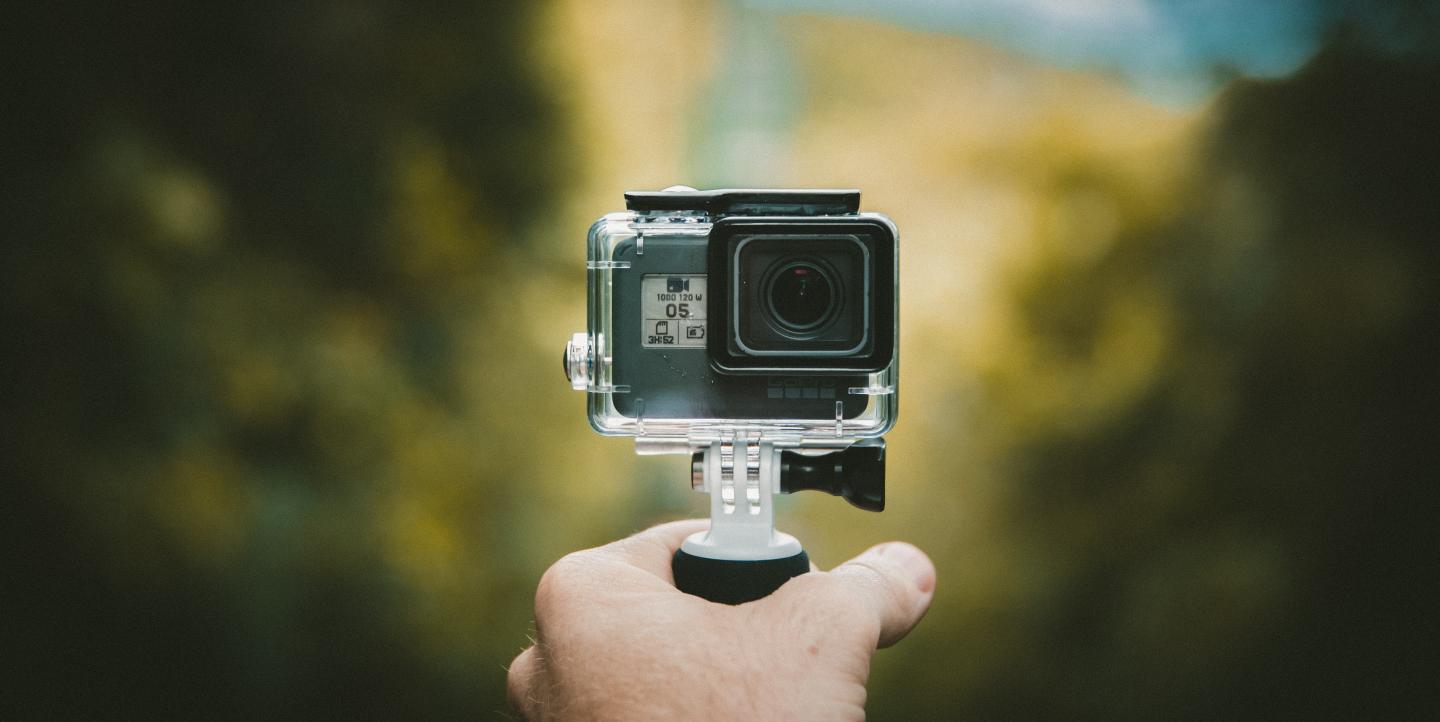In partnership with our parent organization, the International Center for Journalists (ICFJ), IJNet is connecting journalists with health experts and newsroom leaders through a webinar series on COVID-19. The series is part of the ICFJ Global Health Crisis Reporting Forum.
This article is part of our online coverage of reporting on COVID-19. To see more resources, click here.
Yusuf and Sumaiya Omar have trained communities around the world to create their own video storytelling projects through Hashtag Our Stories, a cross-platform video publishing company the couple founded. Now, with COVID-19, the ability to harness the power of user-generated video content is becoming essential for journalists all over the world, they said in an ICFJ webinar on Wednesday.
"We need different tools and different ways of fighting COVID-19 when we look at a journalistic storytelling response,” said Yusuf Omar, “because this is like nothing we've ever experienced before.”
Straight from their online training as part of the ICFJ Global Health Crisis Reporting Forum series, here are some essential approaches to creating and curating high-quality video footage on COVID-19:
[Read more: Media sustainability during a pandemic]
Premium user-generated content
When working with any user-generated content, Sumaiya Omar emphasized the importance of explaining to creators the value they will gain from contributing to your project. "It's really about a value-exchange and not just an extractive process,” she said.
Sumaiya Omar also stressed that Hashtag Our Stories allows contributors to republish on their own accounts any videos they create for Hashtag Our Stories. "To us that's just increasing the community,” she said. “That's just allowing more people to see the video and tell stories themselves.”
Yusuf and Sumaiya Omar offered several approaches that reporters can take with their user-generated content:
- Presenter-led explainer videos: Reporters and the communities they work with can create these videos based off of relevant COVID-19 guidelines. Hashtag Our Stories produced a video in which Yusuf Omar explains how soap breaks down the coronavirus, for example.
- Two-camera explainers: At Hashtag Our Stories, Yusuf and Sumaiya Omar have found solutions-based videos successful. That’s why they create DIY videos, such as one in which Yusuf Omar shows the audience how to create a face mask from materials they already have at home. Using two cameras, Yusuf Omar made a tightly edited video in which the audience sees him making a face mask, as well as getting a look at the process from his perspective.
- One-person, narrative storytelling: This format can be particularly useful for stories in hard-to-access spaces. Hashtag Our Stories recently produced a story in which a man in England walks viewers through the experience of getting tested for COVID-19 and having his family test positive. Sumaiya Omar recommends that, for user-generated content, reporters should get quotes and selfie videos from the creators with a description of who they are and what they are doing. This narrative video can often work together with other existing footage shot by the video creator.
- Curated footage from multiple people: Sumaiya Omar explained that many Hashtag Our Stories videos are created in this style, featuring at least four or five people. “If you can work remotely from home and help curate stories that are unique that aren’t coming up elsewhere, you will find a market for them,” said Yusuf Omar. The team curated a video in this format showing people around the world explaining the “#IStayHomeFor” hashtag challenge and why they are choosing to practice social distancing.
"If you're thinking, 'This is all for social media, this is never going to be appropriate for a television station,’ I'd encourage you to think again,” said Yusuf Omar. He added that they have produced a series of COVID-19 videos in collaboration with NBC.
Sumaiya Omar pointed out that, although video for social media is often shot in a vertical format, you can put those videos in a horizontal format to be more compatible for broadcast TV, YouTube and other platforms. With all of these formats of user-generated content, the Omars emphasized that it’s important to make sure you have permission from the creators for content you would like to use.
[Read more: Mental and physical health of reporters during COVID-19]
Augmented reality (AR)
The Hashtag Our Stories team has created augmented reality camera lenses within existing apps like Snapshat, Instagram and Facebook, which provide people with a guide for telling their story. For example, they have created a lense with recommendations from the CDC, and people can film themselves and place that lense over their own videos.
Yusuf Omar says that presenting information about social distancing and other topics to people with augmented reality lenses helps make that information more accessible.“It’s boring if it’s in a report. It’s nice if it’s in an AR lense that people can utilize,” he said.
Wearable journalism
The Omars are big proponents of cameras that people can wear, which helps make the filming experience immersive. “We are sending out our camera glasses to communities all over the world,” Yusuf Omar said.
Right now, the Hashtag Our Stories Team is looking for stories related to people performing acts of kindness during COVID-19. People like fitness instructors and essential workers can provide unique, first-hand video reporting on their work during COVID-19.
Online webinars and social virtual reality
As in-person events have been cancelled around the world, the Omars acknowledge that it can be difficult to have moments to connect with one’s audience and other newsrooms.
“We’re finding that using augmented reality within training capacities has been an effective way to speak to people around the world,” said Yusuf Omar. Hashtag Our Stories will be hosting webinars and utilizing augmented reality tools to help keep people engaged in discussion about COVID-19.
Yusuf and Sumaiya Omar are also experimenting with the use of live virtual reality to illustrate first-person stories about peoples’ COVID-19 experiences. "I would love nothing more than to be in Italy working with communities, understanding what happened there,” said Yusuf Omar, “but of course it's not practical, it's not feasible." Using virtual reality, the Hashtag Our Stories team talked to young people in Italy about life in quarantine.
Going forward
“This is arguably the biggest global story that connects us all in potentially the last 100 years,” said Yusuf Omar. Both Yusuf and Sumaiya Omar agree that, with the pandemic, they have seen their audience spending more time online. That can be good in regards to audience engagement and retention, but they also acknowledge that looking for video content to curate can be overwhelming.
Yusuf Omar encourages video curators to really think about their personal brand and the brand of their newsrooms. “Distill who you are and who you are not, then you can cut away a lot of the noise,” he said. He also encouraged video creators to think about the kind of stories that their audience expects to see.
The Omars also encouraged mobile video journalists to reach out to Hashtag Our Stories if they have questions or want to collaborate on a project. “The traditional media landscape has been knocked sideways, but there are new opportunities for you,” Yusuf Omar said.
The Global Health Crisis Reporting Forum from ICFJ and IJNet connects journalists covering the novel coronavirus pandemic with leading health experts, resources and each other. Learn more and join the Forum through its Facebook group. Journalists can use these insights and quotes in their stories.
Main image CC-licensed by Jakob Owens via Unsplash.


